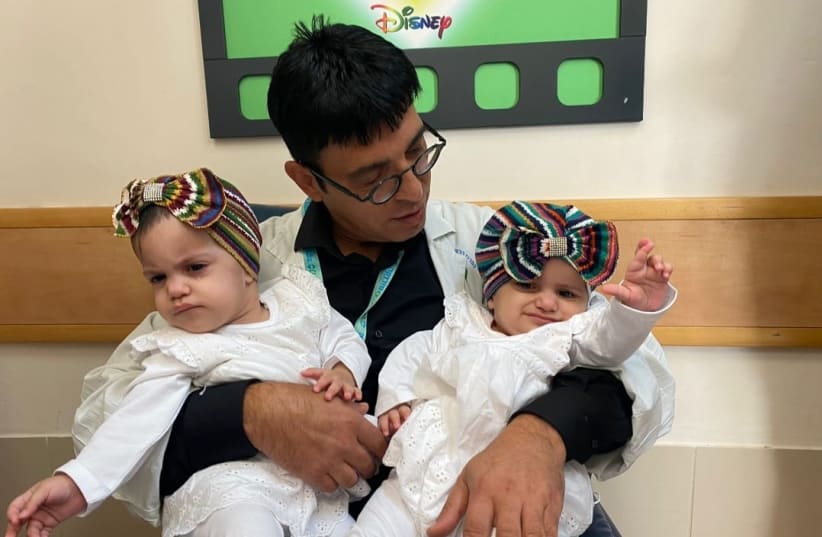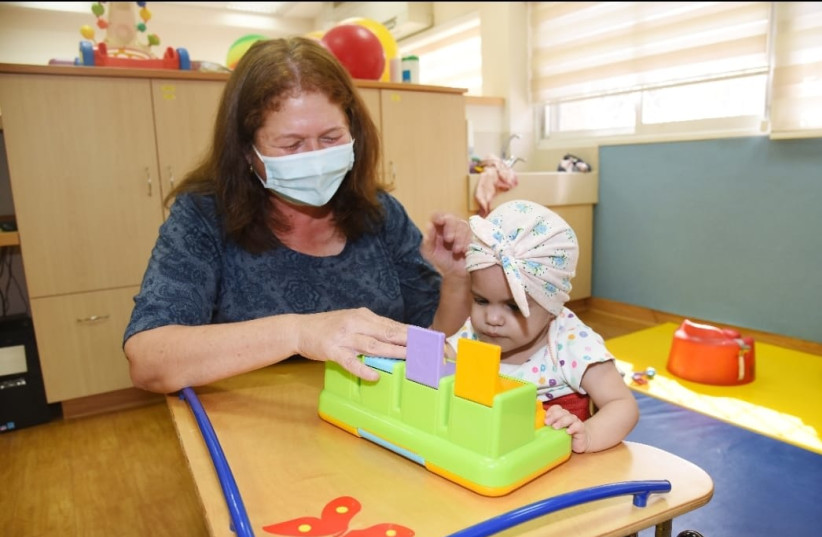One-year-old twin girls who had been conjoined at the back of their heads and who were separated by a team of doctors at Soroka University Medical Center in Beersheba, have gone home.
The girls underwent rare - some described it as near-miraculous - surgery last month. They were released on Thursday but will continue to receive outpatient treatment at the hospital.
The two have been under local and international evaluation and treatment since their birth in August 2020.
“There is a tremendous sense of satisfaction for everyone who participated in the process,” said Dr. Mickey Gideon, director of pediatric neurosurgery at Soroka. “We accompanied the twins during the mother’s pregnancy, prior to the operation and in the last month in the hospital in the pediatric intensive care unit, and then the pediatric surgery unit and we will be there for them long after.”
The procedure the children underwent is extremely rare – performed so far only around 20 times around the world. They were the first conjoined twins in Israel to have the operation and were also among the youngest in the world to have this operation.
According to research published by the University of California’s UC Davis Health last year, craniopagus twins occur in about one in every 2.5 million births.
The 12-hour procedure involved dozens of medical staff members, many of whom had been supporting the parents since the birth of their daughters. This included neurosurgery, plastic surgery, pediatric anesthesia, pediatric intensive care and brain-imaging specialists.
The doctors used advanced equipment and technology, some of which had to be brought to the hospital especially for the procedure. This included 3D modeling, virtual reality and special monitoring devices.
Specifically, they used STRATASYS, 3D4OP 3D models based on images from MRI, CT and angiography scans that simulated the complexity of the connection between the twins’ blood vessels, meninges, skull bones and skin.
Using the VR model called Surgical Theater, the team was able to make simulations of the procedure and plan it in the most exacting manner. Dozens of simulations of all the stages of the operation were performed in each model before the day of the surgery.
During the operation, after the separation of the blood vessels was successful, the bones were separated. The doctors then split into two teams to work in parallel in two separate operating rooms, performing a reconstruction of the skull of each of the girls and closing the skin.
After the operation, the twins were hospitalized for about a month, Gideon explained, as they recovered without complications.
They also received physiotherapy treatments to bridge their motor gap, because until the surgery they could not turn on their stomachs or sit down because they were conjoined.
“Today they are already flipping, and the more dominant twin has even started to sit up,” Gideon said. “The girls are expected to continue the intensive rehabilitation process even after their release.”
In the future, he said that they may need more operations, most likely aesthetic surgeries of the skull structure.
“This day is especially exciting for me,” Gideon said. “Beyond a professionally significant milestone in the planning, execution and implementation of an operation of a magnitude not previously seen in Israel … I have been associated with twins in an extraordinary way. The understanding that this complex procedure significantly affects their future, strengthens me and all the teams that were involved.”

